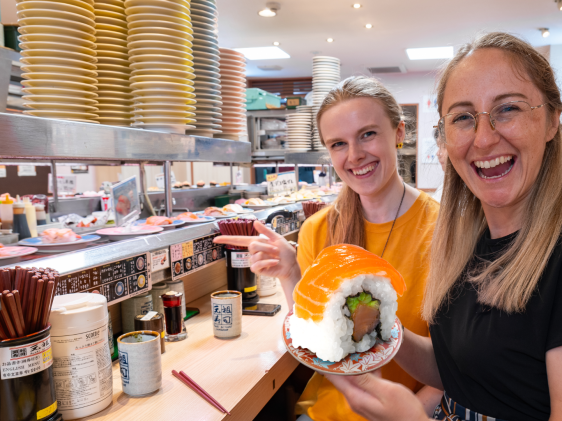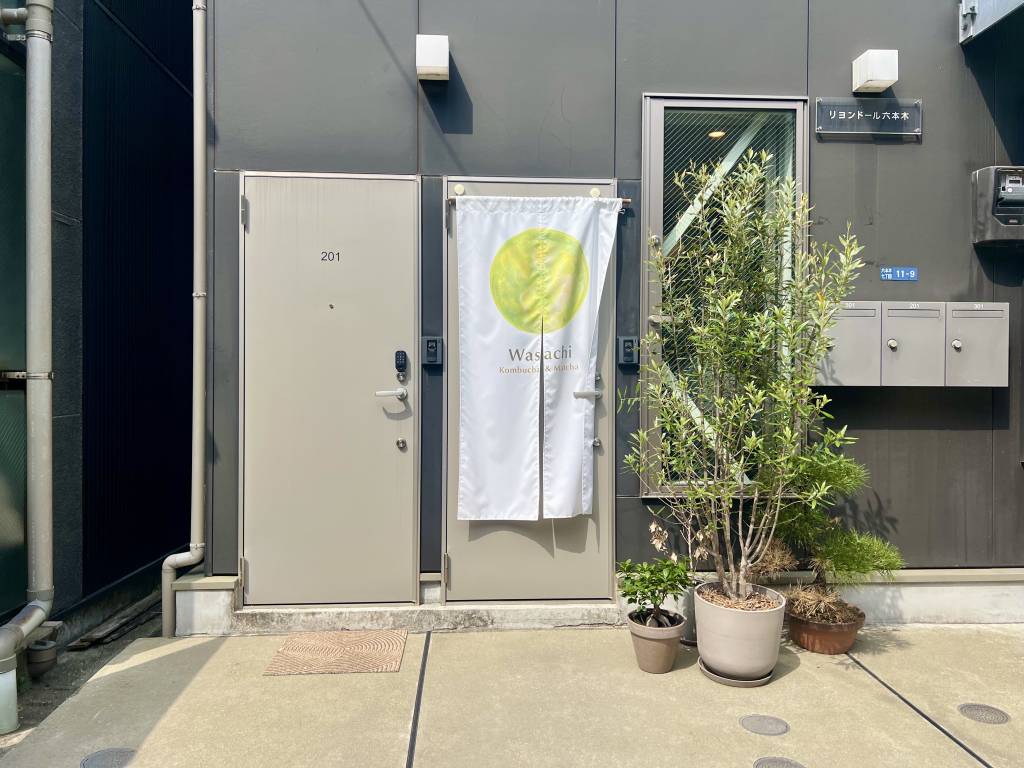The Greater Tokyo Pass is the hipster alternative to the Japan Rail Pass. Forget the Yamanote Line, take the metro and explore the city and surrounds instead.
The biggest decider for getting this pass is whether or not you plan on venturing out of central Tokyo because, if not, a regular top-up IC Pasmo/Suica card would be cheaper. But read on to find out more about your choices.
What is the Greater Tokyo Pass?
The Greater Tokyo Pass offers unlimited rides on 12 private railways and 52 bus companies in and around Tokyo. It comes loaded on a Pasmo Passport IC card, which is incredibly convenient and means you don’t have to worry about losing a paper pass.
Rather than asking which lines are included, it might be easier to say which aren’t — basically JR and Limited Express trains. And, missing those options isn’t a big deal in Tokyo. The biggest inconvenience is probably that it doesn’t cover the Yamanote Line, but you’ll soon forget about that.
| Validity period | Price (adult) | Price (children 6 to 11) |
|---|---|---|
| 3 consecutive days | ¥6,000 | ¥3,000 |
| 5 consecutive days | ¥7,200 | ¥3,600 |
Who can buy the Greater Tokyo Pass?
The Greater Tokyo Pass is available to foreign passport holders with temporary visitor status. Unfortunately, that means foreign residents of Japan can’t buy this pass.
Check out our guide to rail passes available to foreign residents of Japan.
What train lines is the Greater Tokyo Pass valid on?
The Greater Tokyo Pass is valid on the following train lines: Odakyu, Keio, Keikyu, Kesei, Seibu Sotetsu, Tokyu, Tokyo Metro, Toei Transportation, Tobu, Minatomirai, and the Yokohama Municipal Subway.
The 52 bus companies can be found on this map, which also highlights the different routes and locations you can visit.
Where to buy the Greater Tokyo Pass

You can buy the Greater Tokyo Pass in person at various locations. If you don’t already have a Pasmo Passport, you can buy it along with the Greater Tokyo Pass at the same time. Major ticket locations include both Narita and Haneda Airports, and Ikebukuro, Ueno, Shinagawa and Shinjuku Stations.
If you don’t already have a Pasmo Passport, there are even more ticket locations available to you. For example, you can buy the Pasmo Passport and the Greater Tokyo Pass together at Asakusa Station and a bunch of other metro stations.
Is the Greater Tokyo Pass worth it?
Divided between three days, the pass has a “daily cost” of ¥2,000, which can be hard to reach if you’re doing regular sightseeing in the central Tokyo area.
For example, traveling the full route of the Ginza Line subway from Shibuya on one side of Tokyo to Asakua on the other side only costs ¥260 one way.
So the best way to get your money’s worth is to go beyond the central spots and rack up those miles. Luckily, the pass covers quite a wide area and includes some popular sights that are probably already on your list like Nikkō, Yokohama, and Enoshima. (See below for trip ideas and a sample itinerary.)
Greater Tokyo Pass: Popular destinations

The pass covers some great Tokyo destinations — plus a few in the surrounding prefectures. In addition to allowing you to access everything from the Imperial Palace to Harajuku to Sensōji Temple, it covers trips a little farther out as well.
- Mt. Takao is Tokyo’s favorite easy hiking spot and offers some local specialty dishes, unusual temple sights, and beautiful views
- Enoshima is another hit-list location with caves, seascapes, and beaches too. It is next to the famous city of Kamakura (only a few hundred yen to detour there)
- Yokohama is host to the beautiful Sankeien Garden, one of the world’s biggest Chinatowns, the scenic Minatomirai area, the Cup Noodle Museum, the Raumen Museum, and some unusual art
- Nikkō is the farthest spot from Tokyo on this list and the best way to make use of the pass. The area is famed for its beautiful natural sights like autumn foliage and waterfalls as well as impressive temples and shrines
- Up in Saitama Prefecture, Hitsujiyama Park is a great alternative trip especially during the flowering season in spring
- Last but not least, Odawara is home to the closest castle keep to Tokyo as well as some delicious seafood.
The downsides

While the Greater Tokyo Pass has an impressive roster of train lines, there are always going to be some limitations.
The pass does not cover Limited Express trains. That means traveling those longer distances will be slower. However, since those trains can be pricey anyway, consider if they fit into your budget in the first place.
The pass also does not cover JR lines. While bigger stations are always going to have a few private-line alternatives, you will still have to pay a little extra to reach some locations like Kamakura and Takasaki, which only have JR or uncovered line access. This also means you may end up changing trains a little more often if there isn’t a direct non-JR line.
Also, you are required to have your passport on you (although you may not always be asked to present it) to prove the pass is valid.
A three-day itinerary using the Greater Tokyo Pass

For how to make the most of the pass, here is a three-day itinerary that includes main attractions. We use Shibuya as a base for traveling to and from, but prices will stay pretty similar wherever you are in central Tokyo. The offical Greater Tokyo Pass site provides its own impressive savings examples, but it relies heavily on users arriving from and returning to Narita Airport. If that’s you, it’s pretty simple to make the pass worthwhile. If not, it can be a bit of a struggle to reap the benefits of the pass. Hence, we’ve included one day of airport travel and combined it with inner-city sightseeing, followed by two days of trips a little further afield.
If we’re being honest, it was pretty tough to come up with a schedule that significantly beat the price without creating impossibly busy days. The comparison prices uses the best available route and includes JR lines if they offer a quicker option, but not Limited Express trains.

Day 1
Day 2
- Your day: This is a pretty travel-heavy day (6 hours), but it hits two of the biggest sights in Tokyo: Sensōji Temple and the beauty of Nikkō. While the travel times are a bit long, Nikkō is worth it: There are shrines, autumn foliage, and waterfalls to enjoy. You could potentially spend the night there and travel back in the morning, there’s certainly plenty to see. Here’s an alternative pass if you’re considering focusing on the area more.
- Price without the pass: On the same route (JR doesn’t add much here), the day’s travel would clock in at ¥3,320.
- Route: Shibuya – Tsukiji – Katase-Enoshima – Minatomirai – Roppongi – Shibuya
- Your day: With an early start at Tsukiji Fish Market (or Toyosu), you can then explore the little island of Enoshima before enjoying dinner in Yokohama’s Chinatown — paired with the beautiful evening views of Minato-mirai. If you have the energy, why not have a night out in Roppongi before heading home?
- Price without the pass: The same day would cost you ¥2,840, which is pretty good even if you do spend the extra to visit Kamakura (which you definitely should).

Day 3

Summary
The pass itinerary saves a total of ¥2,920. And if you squeezed in even more sights, you’ll save even more. Making a trip down to see Odawara Castle is a good option if you have an extra day for the inner-city sightseeing too. If you have another trip to Narita or Haneda, the pass is better value — otherwise prepare to be busy!
Frequently asked questions
Is the Greater Tokyo Pass worth it?
The Greater Tokyo Pass is worth it if you make the effort. You’ll need to spend over ¥2,000 on transport each day if you have a three-day pass, which usually means travel outside of central Tokyo.
Does the Greater Tokyo Pass cover the Skyliner?
No, the Greater Tokyo Pass doesn’t cover the Skyliner. You can get a tiny ¥20 discount if you show your Greater Tokyo Pass when you buy your Skyliner ticket — but you’re still shelling out ¥1,250 on a route that could be free if you take a slower option that is covered by the pass.
While we do our best to ensure it’s correct, information is subject to change. Post first published in March 2020. Last updated in March 2024.































